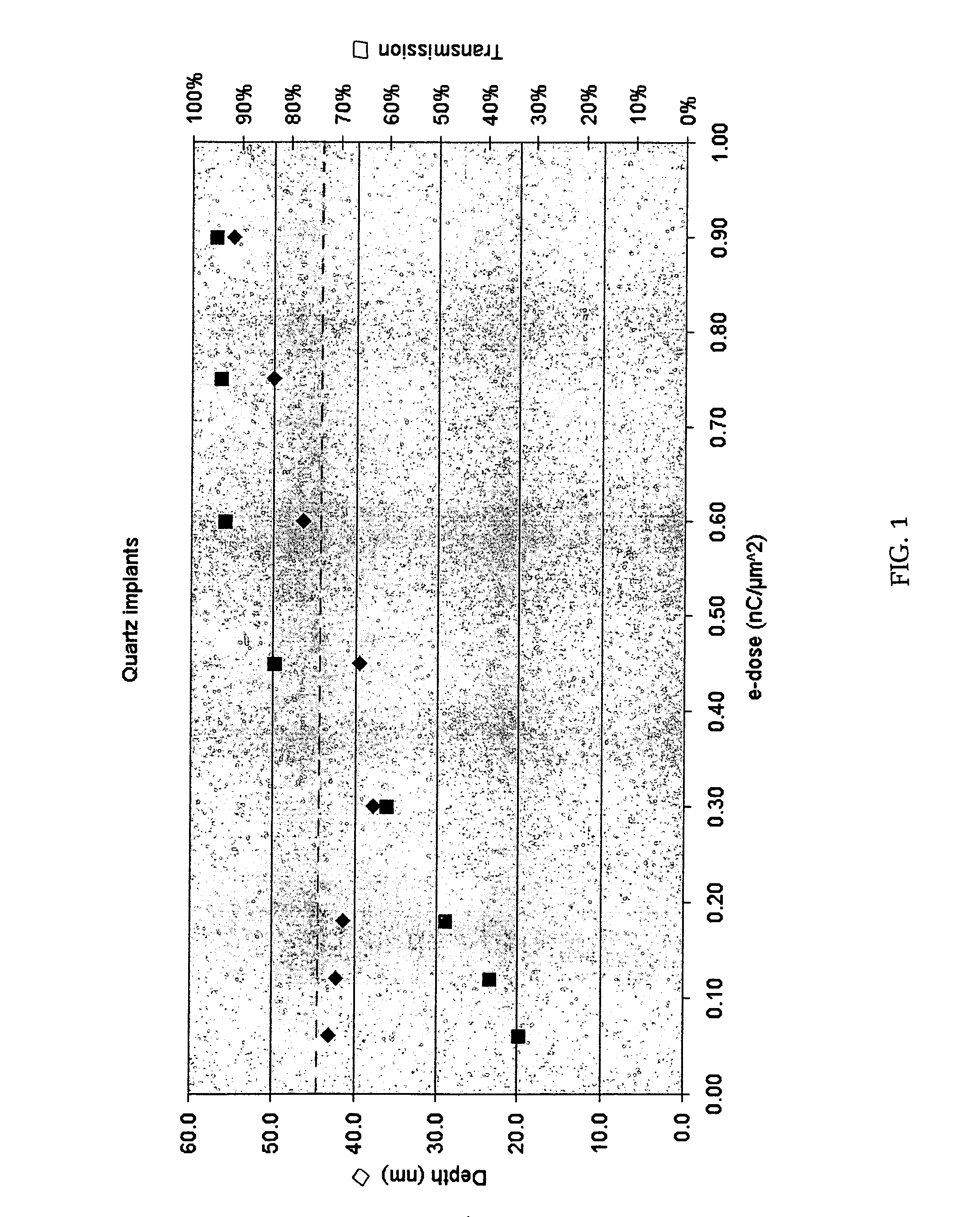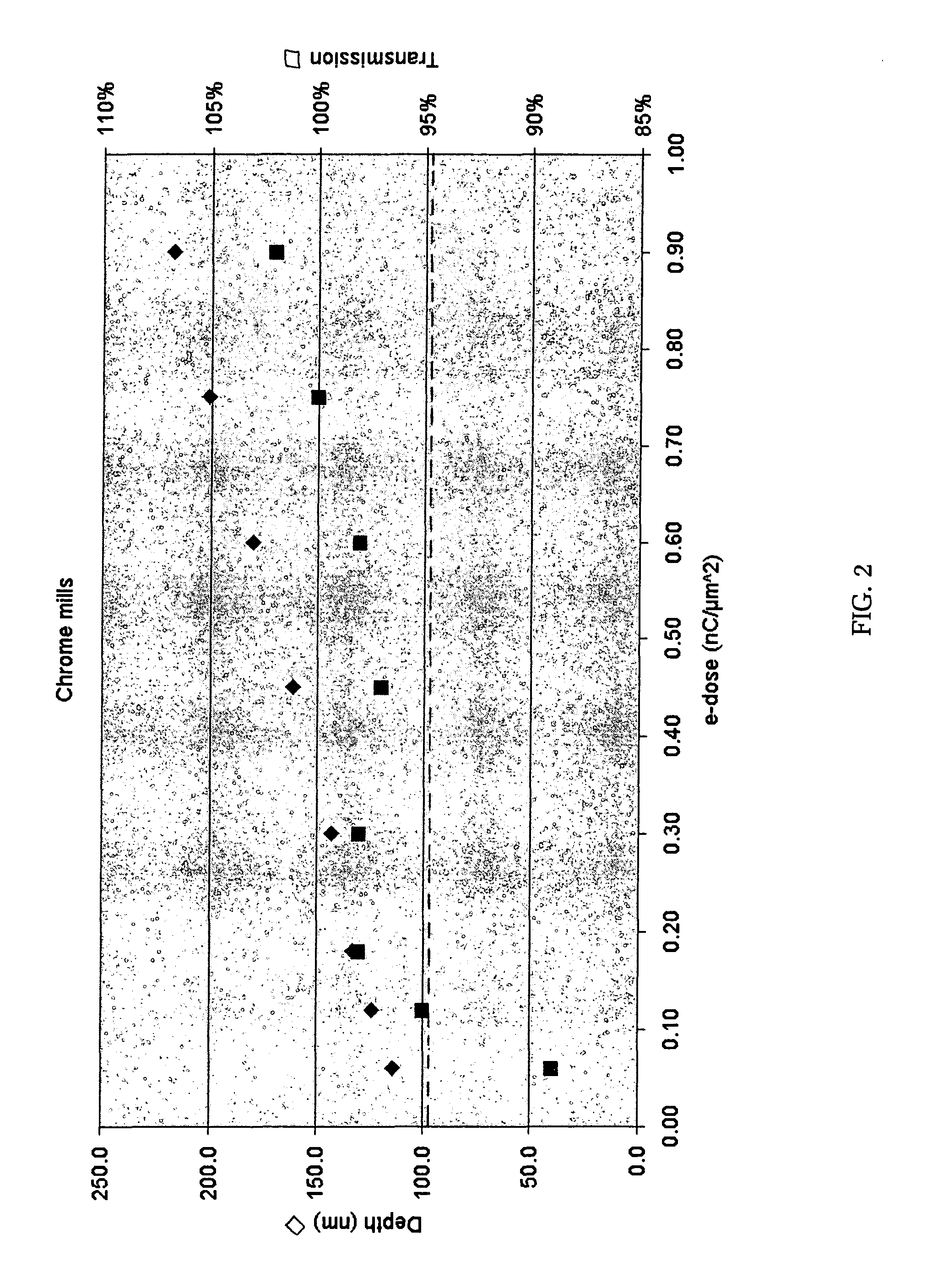Electron beam processing for mask repair
a technology of electron beam and mask, applied in the field of charged particle beam processing, can solve the problems of affecting the transmission of light through the substrate, reducing the size of the structure that can be produced, and requiring repair of defects, so as to reduce the light transmissivity, reduce the thickness of the substrate, and reduce the effect of light transmissivity
- Summary
- Abstract
- Description
- Claims
- Application Information
AI Technical Summary
Benefits of technology
Problems solved by technology
Method used
Image
Examples
Embodiment Construction
[0023]As described above, directing a beam of gallium ions towards the quartz surface reduces the transparency of the surface, thereby adversely affecting the performance of a quartz photolithography mask. Although this decrease in transparency can be intentionally used to make a portion of a mask relatively opaque, an incidental decrease in transparency can also be an undesirable side effect when a gallium ion beam is used to repair an area that is not intended to be opaque.
[0024]Applicants have found that the transparency of the repaired area can be restored by directing an electron beam in the presence of an etch-enhancing gas toward the repaired area. Applicants have found that the effect of this process varies with the concentration of implanted gallium.
[0025]When the implanted gallium is at a relatively high concentration, applicants have found that the transparency of the repaired area can be restored without a substantial change in the substrate thickness. In some cases, the...
PUM
| Property | Measurement | Unit |
|---|---|---|
| thickness | aaaaa | aaaaa |
| thickness | aaaaa | aaaaa |
| thickness | aaaaa | aaaaa |
Abstract
Description
Claims
Application Information
 Login to View More
Login to View More - R&D
- Intellectual Property
- Life Sciences
- Materials
- Tech Scout
- Unparalleled Data Quality
- Higher Quality Content
- 60% Fewer Hallucinations
Browse by: Latest US Patents, China's latest patents, Technical Efficacy Thesaurus, Application Domain, Technology Topic, Popular Technical Reports.
© 2025 PatSnap. All rights reserved.Legal|Privacy policy|Modern Slavery Act Transparency Statement|Sitemap|About US| Contact US: help@patsnap.com



